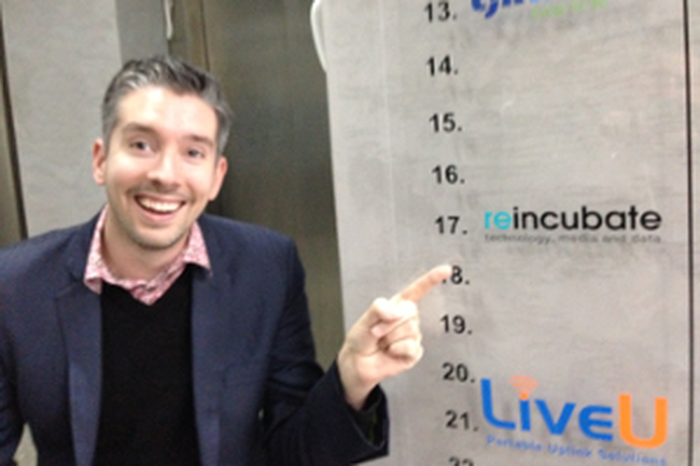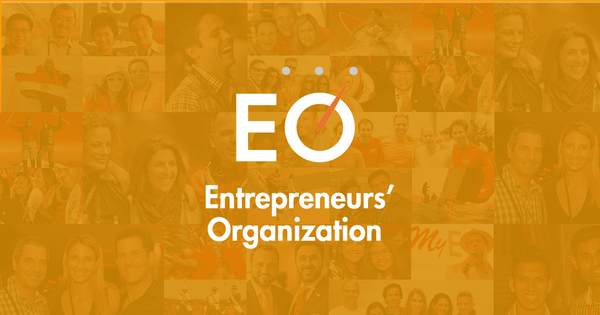How did Reincubate get started?

Whilst out and about I’ve been asked a number of times how Reincubate came to be, and how it grew from my original work supporting entrepreneurs into the iOS & app data business that it is today.
I set up Reincubate in 2008 after leaving Confetti, where I had served as Chief Technology Officer for some years. Over the course of my career I had found that I particularly enjoyed working with founders – and their vitality, passion and capability – but that as the companies I worked with got larger, the founders tended to be replaced by professional CEOs who were much less motivated by a vision of product. I enjoyed working with them a lot less, and so resolved to try and work only with founders in the future.
The founding team as a critical qualifier for success
The idea behind Reincubate was that I would set up a “virtual incubator” to use as a consulting vehicle in my work with start-up companies, and work primarily for sweat equity. In the space of the first six months, I worked with or helped the best part of 90 start-ups, in and around London. My view was that any sort of discussion about equity was a distraction until I had spent some time with the team and been able to answer the question “would I invest in this company?”
With few exceptions, the answer was almost always “no”, and that underlined for me that quality and commitment of the founding team is a critical qualifier for success. If a founder has to rely on an uncommitted advisor to get off the ground, it indicates they will continue struggling on their journey. In hindsight, whilst I’d taken a great opportunity to work with and meet a network of creative founders, I wasn’t any better positioned to get to work with the ones who were best placed to build killer companies.
I set my sights on co-founding a company or mucking in at an early stage
Realising this, I changed the plan and set my sights on co-founding a company or mucking in at one from an early stage. I’d started my first company in a Young Enterprise scheme at the tender age of 14, been one of the first staff at start-ups Enterprise Quest and Artspages, and worked for David the founder at Confetti, so I wasn’t too apprehensive about it. I did a bunch, one after the other: Costing Energy (energy saving comparison), Purple Hoot (e-cards), Mazuma (consumer finance products lead generation) and awdit (later pivoted, but SaaS IT SME tools at the time).
Whilst I was working on those companies day and night through the week, I had continued to build software and sites during my weekends for fun. In particular, I had upgraded my iPhone’s iOS several times, and found that the upgrade process often resulted in the phone losing data. In July of 2008 it got me badly, and I realised the upgrade process had deleted all of my text messages, contacts, calendar entries and photos. I knew that a copy of data was somehow hidden on my computer inside the iTunes MobileSync folder, but after much Googling found that there was no way to retrieve it.
I built our first successful application in a weekend of coding to get my data back
I absolutely had to get the data I had lost back, and quickly. So that Friday evening I prepared in true hacker style, by filling my flat with snacks, tea and strong stimulants. I coded all weekend, until my friend and co-founder Andrew came up on the Sunday afternoon and I was able to show off to him the Perl script I had built to recover my data. Hurrah! I posted the script on the Reincubate site as a free download, thinking it might help some others.
Later, that September, I was caught out once more when applying an iOS update to my iPhone, and my data was lost. I had received quite a few emails about iPhone Backup Extractor, and thinking that I would no doubt suffer from the data deletion problem again, I rewrote it as a Windows application so that it was easier to select which data to recover, and so that users downloading it from the website would send me fewer questions. I found I enjoyed helping users recover their data, and I set about trying to help everyone who got in touch, spending hours late each night in email back and forth.
As I made it easier to use, I got more and more email from users
My strategy didn’t really work. The extra accessibility of the Windows application made it far easier for non-technical people to use it, so the net result of the improvement was that I received more email rather than less. I loved helping users out, but I realised I couldn’t spend all my evenings replying to emails about data recovery. In an act of desperation, I put limits in the software. For $20, sent via PayPal, I would build users a special version of the software with their name hard-coded into it, and I would get them their data back, one way or another.
The software sold a little and seemed to be gathering pace, but I was much more interested in the other opportunities around me. I continued with the start-ups I was working with or had co-founded, and as winter of 2009 rolled in I had started another business and was thinking about raising money for it when I received a call from the new Chief Exec at Wiggle. He was less than a month into his tenure and made me an offer which I found hard to refuse: 3 months of work to sort out stability problems and international sites as interim IT Director, in return for just about the amount of money I needed for the business. I thought it would be hard to raise money over the Christmas period anyway, so why not do it?
People were discovering the software through word of mouth in Apple Stores
As with my previous interim experiences, I found it hard to leave. My 3 months became 6, and then when given the opportunity to invest in the business and stay for a few years I took it. Wiggle had some knotty technology, product and growth challenges. By this time people were starting to tell me they learnt about the software in their local Apple Genius Bar, and were leaving comments such as the following on the site:
“This tool is awesome! I tried to upgrade my iPhone from 2.2 to 3.0 OS and the upgrade process crashed leaving my phone in the so-called “recovery mode” I needed to get some really important media files out of my phone and could not get any help from Apple support on how to access the data from my most recent backup. They kept telling me to restore to factory settings - aka lose all my data. But your tool came to the rescue. I was get all my files out. BRAVO!”
“This is the BEST software I have ever found. You are the BOMB! THANK YOU THANK YOU THANK YOU for creating this software. It is FANTASTIC, WONDERFUL, there just are not enough words to express my gratitude!”
“OMG! Thank you so much! I had all my pictures of my son for the last 4 months, and him being only 10 months now, 4 months is a big deal. Was gutted when I thought I had lost them all because of a stupid software update, but with this extractor, I was able to recover them all! Thank you, Thank you, Thank you!”
“Hi, Aidan - I really appreciate all the extra attention you gave to me to help me restore my files. We got about 90% of the data which is still a miracle. My assistant can enter the rest by hand. You were so patient with my operator errors. I know there has to be a way to get the rest with your program, but it’s way smarter than I am. Your attention to your customers is outstanding. I think a lot of other companies could learn from you! Look me up if you ever come to Alaska!”
The police sent photos of men posing with guns, cash, and drugs
The software saved recordings and pictures of deceased loved ones, children's first birthdays, special messages, and so on, and I was also getting email from all sorts of police and investigative groups. Various American police forces got in touch for help catching child predators, or making sense of data they had recovered from phones seized from drug dealers. In some special cases where data had been partly corrupted in an attempt to erase it the investigating officers would send me a dump of backup data. In one memorable case I was surprised to receive a cache of photos of men posing with guns, gunshot wounds, and piles of cash and drugs. (Of course, all data was kept confidential and securely erased from our systems after recovery.)
I needed help so that I could put all my energy into Wiggle, so I turned to my London network and some of my former colleagues. Andy, who had been the Development Manager at Confetti, stepped in to run sales and development of the iPhone Backup Extractor. I took a non-exec role at Reincubate whilst Andy and a growing team built on my original software, and over time we released a number of other applications, including a similar backup extractor for the BlackBerry. One of the reasons it had been so demanding on my time was that despite only committing to support paying users, I had been going to any length – email late into the evening, changing the program, whatever – to help the free users, too. This seemed to lead to even more people getting in touch with us, and I was keen that Andy continue this pattern.
We were first to support every release of iOS and encrypted data extraction
By this point a handful of competitors had sprung up, but none were as committed to getting people’s data back as our team was. Just as we were first to create a backup extractor, we were first to support every major new release of iOS and first to support extraction of data secured with Apple’s proprietary encryption system. Andrew periodically wrote code and built some interesting visualisations which got press interest, including one to plot where an iPhone user had been on Google Earth.
In late 2011, after moving mountains, we sold Wiggle to private equity company Bridgepoint, and after that process there was little question I’d follow my heart and leave to run Reincubate as a proper product business. Of course, I’ve skipped a lot of detail, but by that time Reincubate had built a team of 6, written or bought its way to a small stable of applications and sites, sold to a range of impressive customers, and taken more than $1m in sales.

Andy and I opened the company’s first office in the City in August 2012, and Andrew joined us later that year -- after we bought his company -- to make a team of three.
As the company continues to develop the team and I will write the occasional post on how we work and what we have been learning.



